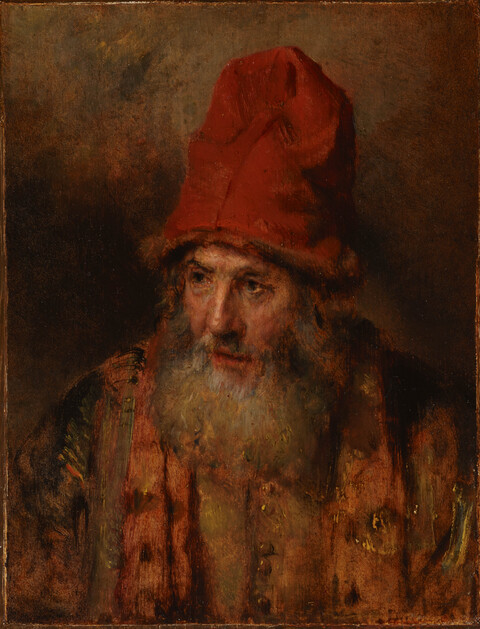Marks, Inscriptions, and Distinguishing Features
None
Entry
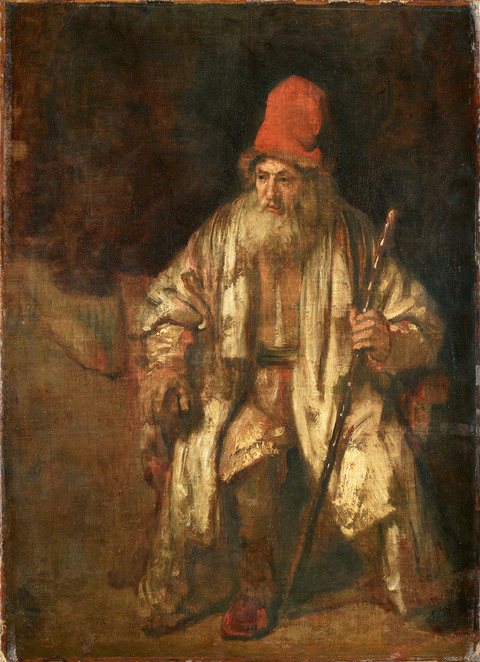
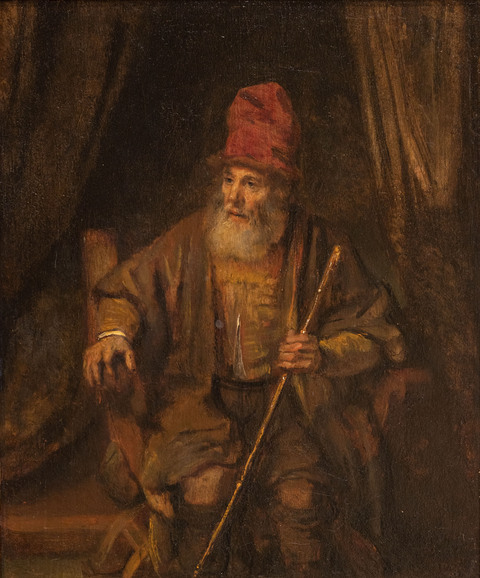
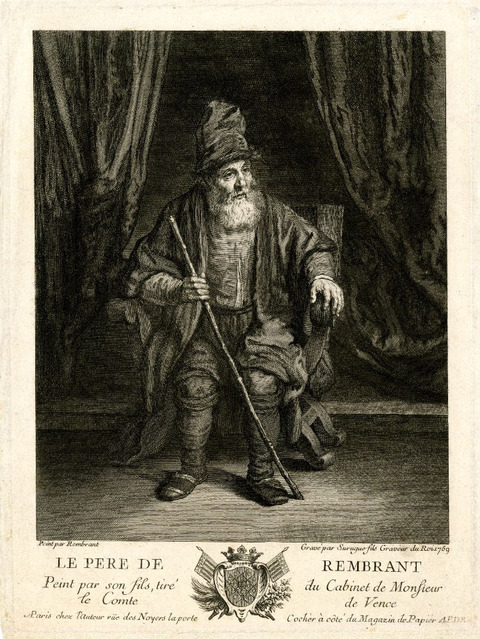
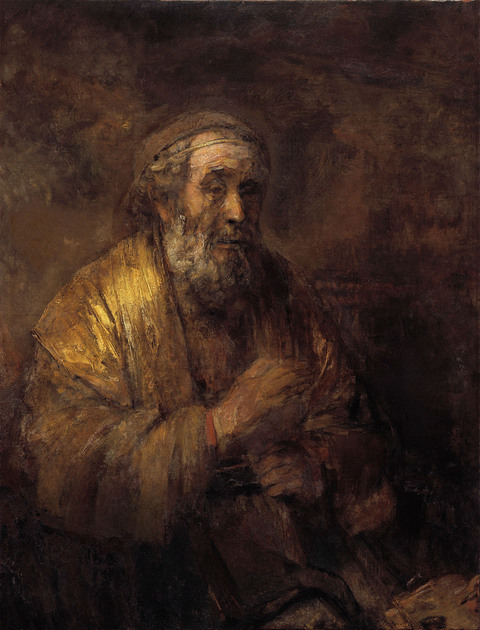
Author
Provenance
Féréol Bonnemaison (1766–1827), Paris;
Sale at (M. Henry, Paris) in 1827.24
William Williams Hope (1802–1855), Paris, London, and Rushton Hall, Northamptonshire;25
V.H. Crosby, London;
By descent to Mrs. H. Hallahan, London, probably until 1904.26
(Dowdeswell and Dowdeswell, London);27
Baron Leopold Hirsch (1867–1932), London, by 1906;28
Sale at (Christie’s, London) in 1934;29
(John Nicholson, London), in 1934.30
(Ehrich-Newhouse Galleries, New York), in 1934;
G.H.A. Clowes, Indianapolis, in 1934 and until 1944.31
(Ivan N. Podgoursky, New York).32
Private English collection.33
(Newhouse Galleries, New York), by 1955;
G.H.A. Clowes, Indianapolis, in 1955;34
Clowes Fund Collection, Indianapolis, 1958–present;
On long-term loan to the Indianapolis Museum of Art, Courtesy of The Clowes Fund, since 1971 (C10062);
Given to the Indianapolis Museum of Art in 2016.
Exhibitions
Grafton Galleries, London, 1909–10, A Catalogue of the Pictures and Drawings in the National Loan Exhibition in aid of National Gallery Funds held in the Grafton Galleries, London, no. 41 ;
Ehrich-Newhouse Galleries, New York, 1935, Catalogue of a Loan Exhibition of Paintings in Aid of The Architects’ Emergency Fund, no. 25;
John Herron Art Museum, Indianapolis, 1937, Dutch Paintings, Etchings, Drawings, Delftware of the Seventeenth Century, no. 59;
North Carolina Museum of Art, Raleigh, 1956, Rembrandt and His Pupils, no. 24 ;
John Herron Art Museum, Indianapolis, 1959, Paintings from the Collection of George Henry Alexander Clowes: A Memorial Exhibition, no. 46;
The Art Gallery, University of Notre Dame, Notre Dame, IN, 1962, A Lenten Exhibition Loaned by the Clowes Fund, Incorporated of Indianapolis, no. 40.
Indiana University Museum of Art, Bloomington, 1963, Northern European Painting: The Clowes Fund Collection, no. 38;
Indianapolis Museum of Art at Newfields, 2019, Life and Legacy: Portraits from the Clowes Collection.
References
Catalogue de Tableaux Précieux des diverses écoles et autres objets de curiosité…formant le cabinet de feu M. le Chevalier Féréol Bonnemaison, sale cat., M. Henry, Paris, 20 April 1827, no. 71 ;
Catalogue de tableaux anciens des écoles flamands, hollandaise et françaises provenant de la galerie de M.W. Hope…, sale cat., Pouchet, Paris, 11 May 1858, no. 16 ;
A Catalogue of Pictures, Comprising Oil Paintings, Water-colour Drawings and Engravings…, sale cat., Knight, Frank & Rutley, London, 14 April 1904, lot 78;
Wilhelm von Bode and Cornelis Hofstede de Groot, The Complete Works of Rembrandt, trans. Florence Simmonds, vol. 8 (Paris: C. Sedelmeyer, 1906), no. 587 (reproduced);
A Catalogue of the Pictures and Drawings in the National Loan Exhibition in aid of National Gallery Funds held in the Grafton Galleries, London, exh. cat. (London: William Heinemann, 1909), no. 41 (reproduced);
Hans Posse, Die Gemäldegalerie des Kaiser-Friedrich-Museums: Vollständiger beschreibender Katalog mit Abbildungen sämtlicher Gemälde (Berlin: Julius Bard, 1911), 2:186, under no. 828 J;
Algernon Graves, A Century of Loan Exhibitions: 1813–1912 (London: Algernon Graves, 1914), 3: 1018;
J.O. Kronig, A Catalogue of the Paintings at Doughty House, Richmond, and Elsewhere in the Collection of Sir Frederick Cook BT (London: William Heinemann, 1914), 2: mentioned under no. 314;
Cornelis Hofstede de Groot, A Catalogue Raisonné of the Works of the Most Eminent Dutch Painters of the Seventeenth Century, Based on the Work of John Smith, trans. Edward G. Hawke, vol. 6 (London: Macmillan and Co., 1916), no. 400;
W.R. Valentiner, The Work of Rembrandt Reproduced in 643 Illustrations, Classics in Art series, 3rd ed. (New York: Brentano’s, 1921), 436 (reproduced);
David S. Meldrum, Rembrandt’s Paintings with an Essay on His Life and Work (New York: E.P. Dutton and Company, 1923), 179, 199, 354 (reproduced);
Andrew Carfax, “Treasures of the Leopold Hirsch Collections,” The Connoisseur (March 1934): 183 (reproduced), 184;
Catalogue of the Collection of Important Pictures by Old Masters, British Portraits, Engravings and Drawings, the Property of Leopold Hirsch, Esq., sale cat., Christie, Manson, and Woods, London, 11 May 1934, no. 126 (reproduced);
Edward Alden Jewell, “Emergency Fund Gains by Exhibit,” The New York Times, 18 January 1935, 21;
Catalogue of a Loan Exhibition of Paintings in Aid of The Architects’ Emergency Fund, exh. cat. (New York: Ehrich-Newhouse Galleries, 1935), no. 25;
W.D. Peat, Dutch Paintings, Etchings, Drawings, Delftware of the Seventeenth Century, exh. cat. (Indianapolis: John Herron Art Museum, 1937), no. 59;
W.R. Valentiner, Rembrandt and His Pupils, exh. cat. (Raleigh: The North Carolina Museum of Art, 1956), no. 24 (reproduced);
David G. Carter, Paintings from the Collection of George Henry Alexander Clowes: A Memorial Exhibition, exh. cat. (Indianapolis: John Herron Art Museum, 1959), no. 46 (reproduced);
F.W. Bilodeau, “The Clowes Fund Collection at Indianapolis, Indiana,” The Connoisseur 148, no. 595 (August 1961): 3–9 (reproduced);
Gemäldegalerie: Verzeichnis der ausgestellten Gemälde des 13. bis 18. Jahrhunderts im Museum Dahlem (Berlin: Staatliche Museen, Stiftung Preussischer Kulturbesitz, 1961), 73, mentioned under no. 828 I;35
John Howett, A Lenten Exhibition Loaned by the Clowes Fund, Incorporated of Indianapolis, exh. cat. (Notre Dame, IN: The Art Gallery, University of Notre Dame, 1962), no. 40;
Henry R. Hope, Northern European Painting: The Clowes Fund Collection, exh. cat. (Bloomington: Indiana University Museum of Art, 1963), no. 38 (reproduced);
Donald Hoffmann, “Old House Has Master Paintings,” The Kansas City Times, 14 September 1967, sec. 4B;
Mark Roskill, “Clowes Collection Catalogue” (unpublished typed manuscript, IMA Clowes Archive, Indianapolis Museum of Art, Indianapolis, IN, 1968);
A. Ian Fraser, A Catalogue of the Clowes Collection (Indianapolis: Indianapolis Museum of Art, 1973), xxxv–xxxvi, 84–85 (reproduced), as attributed to Rembrandt;
Werner Sumowski, Gemälde der Rembrandt-Schüler, vol. 6 (Landau and Pfalz: Edition PVA, 1983), 3527n18, as not by Rembrandt;
Peter C. Sutton, A Guide to Dutch Art in America (Washington, DC: The Netherlands–American Amity Trust, Inc., 1986), 120, as possibly not Rembrandt;
Ernst van de Wetering, A Corpus of Rembrandt Paintings, vol. 6, Rembrandt’s Paintings Revisited: A Complete Survey (Dordrecht: Stichting Foundation Rembrandt Research Project, 2015), 622, as from Rembrandt’s workshop, mentioned under no. 230;
Claudia Laurenze-Landsberg and Katja Kleinert, “Documentation Summary: Attributed to Rembrandt, Old man with a red cap,” Gemäldegalerie Staatliche Museen zu Berlin, https://rkd.nl/explore/technical/5010370.
Notes
-
Rembrandt connoisseur Wilhelm von Bode placed the painting between 1656 and 1658 in an undated certificate of authenticity, what must be the earliest certificate issued by a scholar on this painting. Cornelis Hofstede de Groot, in a certificate of authenticity dated April 1929, which G.H.A. Clowes certainly knew when considering the purchase of this painting, attributes the work to Rembrandt without a date. See File C10062, Clowes Registration Archive, Indianapolis Museum of Art at Newfields. ↩︎
-
Rembrandt’s preference for elderly figures was shared with his peers and students in Leiden and Amsterdam, and certainly contributed to a broader taste for such imagery. In the foreword to his Paradigmata of 1670, Jan de Bisschop (1628–1671) specifically cites the use of old figures as an appropriately painterly subject. He argues that art can more “nicely and pleasantly” represent that which is disgraceful in real life, thereby “making it possible for art to prefer a misformed, old wrinkled human over a well-made, fresh and youthful one.” (”…’t geen in ’t leven is afsienlijck, inde konst en uytgebeeld sij goet en behagelijck dat meer schilderachtich sij en voor de kunst verkieselijck een mismaect, out verrimpelt mensch, als een welgemaeckt, fris, en jeudigh.") As quoted in Ernst Van de Wetering, ed., A Corpus of Rembrandt Paintings, vol. 4, Self-Portraits (Dordrecht: Springer, 2005), 561n32. Recent studies of old age include Anouk Janssen, Grijsaards in zwart-wit: De verbeelding van de ouderdom in de Nederlandse prentkunst (1550–1650) (Zutphen: Walburg, 2007), and Lynn A. Botelho, “‘An idle youth makes a needy old age’: The 17th Century,” in Pat Thane, ed., A History of Old Age (Los Angeles: The J. Paul Getty Museum, 2005). ↩︎
-
Certificates in the Clowes Registration Archive attest to connoisseurs' belief in the painting’s origins in the artist’s late period. In keeping with Von Bode’s dating mentioned above, William Suida dates the painting to about 1655 in an undated statement. Certificates of 11 October 1940 and 5 June 1951 by Wilhelm Valentiner give the painting to Rembrandt with dates of about 1650 and 1654, respectively. ↩︎
-
A fourth related work, a drawing (KdZ 24723) after the Clowes panel recently discovered by Katja Kleinert and Holm Bevers in the Kupferstichkabinett in Berlin, is clearly a copy done outside Rembrandt’s circle. It remains uncertain if it is seventeenth- or eighteenth-century in origin. ↩︎
-
On this painting, see Christian Tümpel, Rembrandt: All the Paintings in Colour (Antwerp: Fonds Mercator, 1993), no. A48, and Ernst van de Wetering, A Corpus of Rembrandt Paintings, vol. 6, Rembrandt’s Paintings Revisited: A Complete Survey (Dordrecht: Stichting Foundation Rembrandt Research Project, 2015), no. 230. ↩︎
-
On this painting, see “Einleitung und Schlusswort,” in Werner Sumowski, Gemälde der Rembrandt-Schüler, vol. 6 (Landau: Edition PVA, 1994), 3518–3519. ↩︎
-
There are, in turn, differences between the Berlin and Kimbell paintings: the open mouth and sharper turn of the head, the pose of the proper left arm and the position of the end of the staff on the outside of the proper right foot (as indicated in the Surugue print), and the presence of curtains in the background. As Roxy Sperber notes in her technical report, large strips had been added to the Clowes panel in the early twentieth century. These strips added breadth to the man and would have imbued him with a monumentality similar to the Kimbell and Berlin paintings. ↩︎
-
Ernst van de Wetering, A Corpus of Rembrandt Paintings, vol. 6, Rembrandt’s Paintings Revisited: A Complete Survey (Dordrecht: Stichting Foundation Rembrandt Research Project, 2015), no. 230. ↩︎
-
See Claudia Laurenze-Landsberg and Katja Kleinert, “Documentation: Rembrandt – Old Man with a Red Cap – Summary – April 2014,” dated November 2015, shared with the staff at the Indianapolis Museum of Art at Newfields. ↩︎
-
Claudia Laurenze-Landsberg and Katja Kleinert, “Documentation: Rembrandt – Old Man with a Red Cap – Summary – April 2014,” 3–4. ↩︎
-
The presence of quartz was noted by Hermann Kühn in the 1960s; see Hermann Kühn, “Untersuchungen zu den Malgründen Rembrandts,” Jahrbuch der Staatlichen Kunstsammlungen von Baden-Württemberg 2 (1965): 198, as reported in Claudia Laurenze-Landsberg and Katja Kleinert, “Documentation: Rembrandt – Old Man with a Red Cap – Summary – April 2014,” 2. ↩︎
-
Claudia Laurenze-Landsberg and Katja Kleinert, “Documentation: Rembrandt – Old Man with a Red Cap – Summary – April 2014,” 12. ↩︎
-
An oral communication from Seymour Slive to Mark Roskill in 1967 identified the Clowes painting as a school piece; see Mark Roskill, “Clowes Collection Catalogue” (unpublished typed manuscript, IMA Clowes Archive, Indianapolis Museum of Art, Indianapolis, IN, 1968). Subsequent authors have followed suit in declaring the work to be by a student or member of Rembrandt’s circle. ↩︎
-
Ian Tyers, “Ian Tyers, “Tree-Ring Analysis and Wood Identification of Paintings from the Indianapolis Museum of Art: Dendrochronological Consultancy Report 1082,” January 2019, p. 20, Conservation Department files, Indianapolis Museum of Art at Newfields. ↩︎
-
The size of the panel accords with a known standard panel size, 10 × 8 Amsterdam “duim” (inches), that Rembrandt seems to have used in about 1640. See Arie Wallert and Michel van der Laar, “Rembrandt’s Head of Christ: Some Technical Observations concerning Matters of Style,” in Stephanie S. Dickey, ed., Rembrandt and His Circle: Insights and Discoveries (Amsterdam: Amsterdam University Press, 2017), 217. ↩︎
-
See Technical Examination Report and Ashok Roy, “Rembrandt’s Materials and Technique: The Ground Layer; Function and Type,” in David Bomford et al., Art in the Making: Rembrandt (London: National Gallery, 2006), 27. ↩︎
-
Valentiner also thought the painting “a fine characteristic study by Rembrandt.” See his certificate of authenticity, dated 11 October 1940, in Clowes Registration Archive, Indianapolis Museum of Art at Newfields. ↩︎
-
For these drawings, see Otto Benesch, A Catalogue of Rembrandt’s Selected Drawings (New York: Oxford University Press, 1947), nos. 526, 1011, and 528, respectively. ↩︎
-
See, for example, his Anna and Tobit, 1626 (Amsterdam, Rijksmuseum); his Apostle Paul in Prison, 1627 (Stuttgart, Staatsgalerie); and his Head of an Old Man, about 1629 (Kingston, ON, Queen’s University, Agnes Etherington Art Centre). ↩︎
-
Compare, for instance, the beard and garb worn by the figure in Hendrick Bloemaert’s Allegory of Winter, 1631 (formerly Amsterdam, Rijksmuseum; destroyed in 1940). See also Rembrandt’s portrait of Nicolaes Ruts, 1631 (New York, The Frick Collection), which prominently features fur because of the model’s sitting for the artist in the winter or, more likely, his participation in the fur trade. While the outer garment may bear some resemblance to an article of clothing known as a tabbaard, Irene Groeneweg cautioned against the use of the term, which always describes a full-length item; Irene Groeneweg, email message to author, 30 January 2014. On the tabbaard, see Marieke De Winkel, Fashion and Fancy: Dress and Meaning in Rembrandt’s Paintings (Amsterdam: Amsterdam University Press, 2006), 27–50. ↩︎
-
Such high, fur-lined hats also appear in Cornelis de Bisschop’s Scholar in his Study, about 1655 (Kingston, ON, Queen’s University, Agnes Etherington Art Centre), and Heyman Dullaert’s Young Scholar in His Study, about 1660–1665 (Kingston, ON, Queen’s University, Agnes Etherington Art Centre). ↩︎
-
Irene Groeneweg, email message to author, 29 January 2014. Groeneweg connects the high hat with an illustration of “a merchant from the Netherlands” in Cesare Vecellio’s 1590 De gli habiti antichi et moderni di diverse parti del mondo libri due… (Of Ancient and Modern Dress of Diverse Parts of the World in Two Books…), which, in turn, is based on an earlier illustration of a Muscovite or Russian merchant in Jost Amman’s 1577 Trachtenbuch. Groeneweg postulates that such costume compendia could have informed the painter of the Clowes panel’s understanding of an “Eastern,” or Old Testament, figure, which is confirmed by the three drawings mentioned above. ↩︎
-
On the “partial copy,” see Michel Franken, “Learning by Imitation: Copying Paintings in Rembrandt’s Workshop,” in Ernst van de Wetering et al., Rembrandt: Quest of a Genius, exh. cat. (Zwolle: Waanders, 2006), 153–177, 169, especially. For recent literature on the tronie, see Jaap Van der Veen, “Faces from Life: Tronies and Portraits in Rembrandt’s Painted Oeuvre,” in Albert Blankert et al., Rembrandt: A Genius and His Impact, exh. cat. (Zwolle: Waanders, 1997), 69–80; Dagmar Hirschfelder, Tronie und Porträt in der niederländischen Malerei des 17. Jahrhunderts (Berlin: Gebr. Mann Verlag, 2008); and Franziska Gottwald, Das Tronie: Muster, Studie, Meisterwerk; Die Genese einer Gattung der Malerei vom 15. Jahrhundert bis zu Rembrandt (Munich and Berlin: Deutscher Kunstverlag, 2011). ↩︎
-
Catalogue de Tableaux Précieux des diverses écoles et autres objets de curiosité…formant le cabinet de feu M. le Chevalier Féréol Bonnemaison, sale cat., M. Henry, Paris, 20 April 1827, no. 71. The description of this lot, cut from a copy of the auction catalogue, is attached to the back of the painting. ↩︎
-
Catalogue de tableaux anciens des écoles flamands, hollandaise et françaises provenant de la galerie de M.W. Hope…, sale cat., Pouchet, Paris, 11 May 1858, no. 16. ↩︎
-
According to the Museum of Fine Arts, Boston’s website, for a painting by Benjamin West (06.2362), the Hallahan estate sale took place on 14 April 1904 in London at Knight, Frank & Rutley, “being part of the collection formed by the late V.H. Crosby.” ↩︎
-
This is recorded in Wilhelm Von Bode and Cornelis Hofstede de Groot, The Complete Works of Rembrandt, trans. Florence Simmonds, vol. 8 (Paris: C. Sedelmeyer, 1906), no. 587(reproduced); a Dowdeswell and Dowdeswell label appears on the back of the panel. ↩︎
-
As recorded in Wilhelm Von Bode and Cornelis Hofstede de Groot, The Complete Works of Rembrandt, trans. Florence Simmonds, vol. 8 (Paris: C. Sedelmeyer, 1906), no. 587 (reproduced), and see A Catalogue of the Pictures and Drawings in the National Loan Exhibition in aid of National Gallery Funds held in the Grafton Galleries (London: William Heinemann, 1909), no. 41, as loaned by Hirsch. ↩︎
-
Catalogue of the Collection of Important Pictures by Old Masters, British Portraits, Engravings and Drawings: The Property of Leopold Hirsch, Esq., deceased, sale cat., Christie, Manson and Woods, London, 11 May 1934, no. 126 (reproduced). ↩︎
-
Although an annotated copy of the Catalogue of the Collection of Important Pictures by Old Masters, British Portraits, Engravings and Drawings: The Property of Leopold Hirsch, Esq., deceased at the Frick Art Reference Library (FARL) indicates the painting sold to “G. Nicholson,” an article listing Hirsch auction results indicates that lot no. 126 went to John Nicholson, the English dealer; see “Highest Prices in Hirsch Dispersals,” in The Art News (1934): 17. ↩︎
-
See invoice, 31 May 1934, signed by Bertram Newhouse and G.H.A. Clowes, File C10062, Clowes Registration Archive, Indianapolis Museum of Art at Newfields. ↩︎
-
In correspondence with Podgoursky in spring 1944, “the little Rembrandt panel” was one of several paintings G.H.A. Clowes agreed to sell; see Podgoursky Correspondence File, Clowes Registration Archive, Indianapolis Museum of Art at Newfields. On occasion, G.H.A. Clowes sought to upgrade his collection by exchange or by trade, or when seeking funds to purchase another painting. ↩︎
-
The particular private English collection is not identified by Newhouse Galleries at the time of its sale to G.H.A. Clowes for a second time. See File C10062, Clowes Registration Archive, Indianapolis Museum of Art at Newfields. ↩︎
-
The painting is included in the exhibition and its catalogue, Paintings from the Collection of George Henry Alexander Clowes: A Memorial Exhibition, exh. cat. (Indianapolis: John Herron Art Museum, 1959), no. 46 (reproduced). ↩︎
-
The painting is similarly described in the editions of the catalogue published in 1962, 1963, 1964, and 1966. ↩︎
